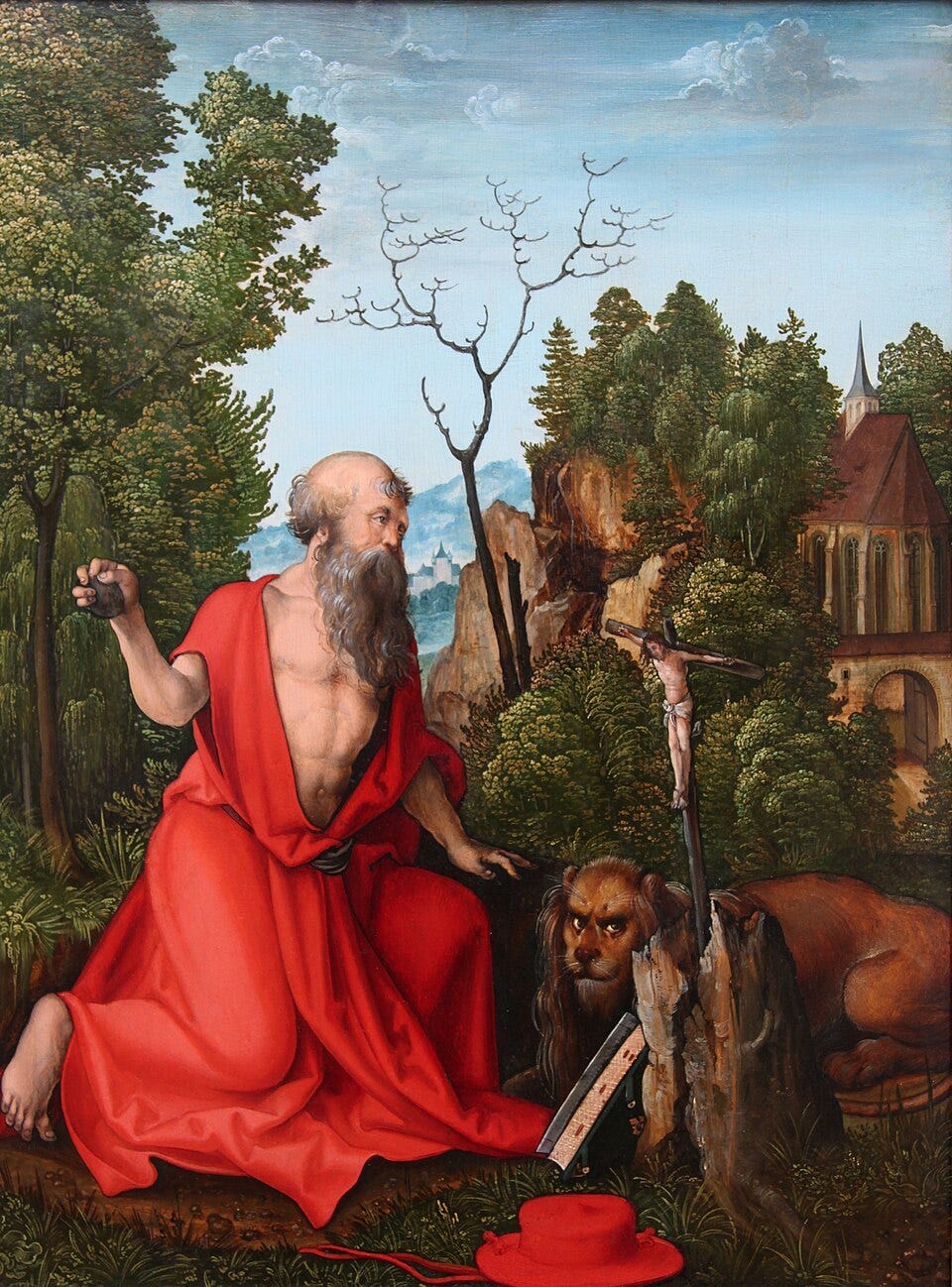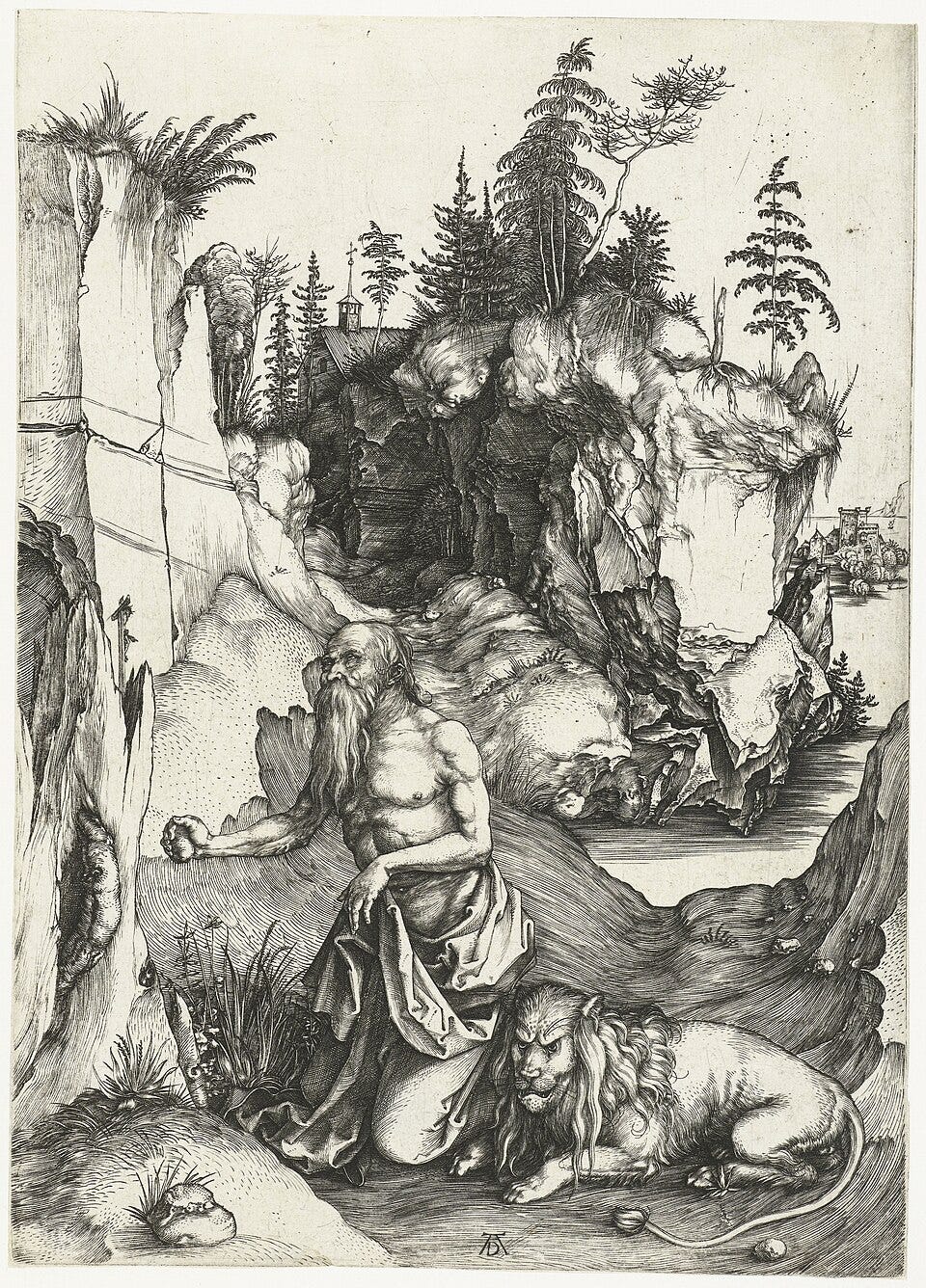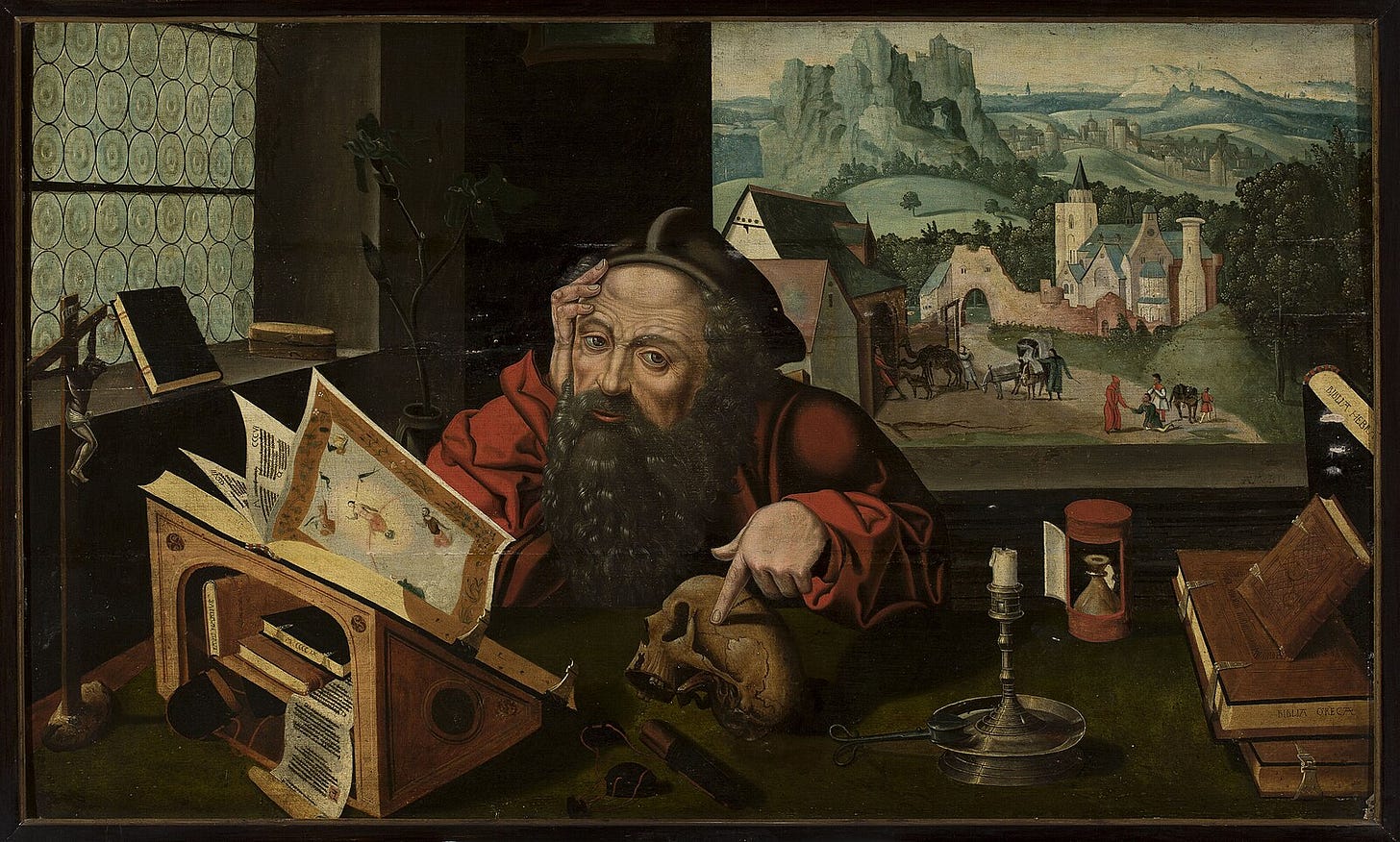St. Jerome in His Study
I like St. Jerome. He was a fourth-century Doctor of the Church best known for his biblical translations and for his epistles on women’s monastic lives.1 During his ministry in Rome, he was often criticized for his friendship with women. He wrote a charming defense of himself in Epistle 45:
It often happened that I found myself surrounded with virgins, and to some of these I expounded the divine books as best I could. Our studies brought about constant intercourse, this soon ripened into intimacy, and this, in turn, produced mutual confidence. If they have ever seen anything in my conduct unbecoming a Christian let them say so. Have I taken any one's money? Have I not disdained all gifts, whether small or great? Has the chink of any one's coin been heard in my hand? Has my language been equivocal, or my eye wanton? No; my sex is my one crime, and even on this score I am not assailed, save when there is a talk of Paula going to Jerusalem.
“Oh, it’s my fault virgins like me? That’s on me, now? It’s my fault that women like talking about books with me? Even though I behave perfectly, and everyone knows it?”
By the late Middle Ages he had also become a popular subject for painters and engravers (Jerome in his study is a part of Dürer’s Master Prints). He was often depicted penitent, either shirtless or in torn clothing, sometimes in the desert or the wilderness, sometimes in his study; occasionally in the dress of a cardinal and carrying a miniature of the church; often with a lion (there was a later Androcles-style legend attached to him, whereby he befriended a lion by removing a thorn from its paw) or a skull as part of a memento mori motif.
As is so often the case, part of the pleasure of these paintings comes from the unpredictable, idiosyncratic depiction of what a lion looks like from someone who may never have seen one, or has only the memory of a badly-taxidermied speciman glimpsed once, decades ago, at a Swedish zoo to go on:
One gets the impression that Jerome runs a half-unwilling animal health clinic out of his study, but doesn’t really like to be interrupted: “I’ve got to finish glossing this passage today, so do try to watch where you’re going from now on.”
[Image via]
I find this one absolutely startling because this lion looks so much like a Pixar animation of a slightly unscrupulous bowling-alley manager it’s difficult to believe someone actually painted him in the 16th century.
[Image via]
“Jerome Penitent” often faces a crucifix holding a rock, sometimes depicted with the lion, no longer in need of medical treatment but now seeming to follow him around out of gratitude: I am sorry. I am sorry, Lord, and my lion is sorry; I and my lion are both very heartily and humbly sorry for our sins, and for whatever the lion equivalent of a sin might be.
[Image via]
Now you’ve got to promise me — absolutely promise me — that you’re not going to do this again. I’m a Doctor of the Church, not of veterinary medicine, you know
[Image via]
When he’s painted in his study, as he is here, Jerome is sometimes shown being visited by angels. Usually when a painting shows angels visiting a saint, the saint is overwhelmed by the encounter, or at least bothers to look at them. Not Jerome! He’s not legally or spiritually required to acknowledge any visitors that aren’t lions. Leave me, boys, can’t you see I’m busy? I’ll be in Heaven soon enough, and we can talk them.
[Image via]
He does look wonderfully suspicious of Christ here, doesn’t he? I’ve got my eye on you, friend — I and my lion have both got our eyes on you — my lion’s got eyes on me, and I’ve got eyes on you, so consider yourself double-watched —
[Image via]
I’ve never seen a more perfect illustration of the unspoken desire to have class outside: Oh, Lord, mightn’t I venerate you outside today? I’ll bring the skull with me, I promise
[Image via]
I’m particularly fond of this version of Jerome because he’s behaving just like my one-year-old son: clutching several of his toys fondly to his chest, while one of the dogs licks his feet unawares.
[Image via]
But it’s in his guise as Doctor of the Church that I like him best. He’s positively furious about having to carry the church around!
[Image via]
I don’t want to carry the Church around. and furthermore I don’t like it. Where is my lion
[Image via]
But Jerome’s irritation with carrying the church is nothing to St. Anthony’s wroth at having to hold a lily, or St. Andrew’s at carrying the cross. They all long to switch, but daren’t – How I hate this lily — You think you’ve got it bad! I’ve got to lug around this lousy church and crummy book — You two don’t know what suffering is til you’ve hauled a cross around –
[Image via]
He also wrote one of the earliest descriptions of Vitamin A deficiency!













This is the kind of content I think of as "peak Lavery" and would envy if I didn't enjoy it so much.
His letters truly are a treasure trove. The earliest ones are very sad as he is writing to friends who do not write to him. Later ones, where he is giving advise on the ascetic life, are much more cheerful.